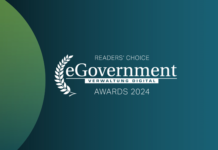Discussions surrounding the modernization of registers in Germany focus primarily on the data-protection-compliant merging of register data from different areas. And quite rightly so. At the same time, however, this ignores other challenges that only arise in practice after data exchange – for example, the mapping of source data to the correct target fields.
Short & concise:
- In areas such as tax or healthcare, merging register data is already possible today.
- However, data mapping from different registers is complex. This often requires an extensive set of rules.
- This should not be programmed out, but a modeling approach with rule and calculation language should be used.
Register modernization promises to make digital administrative procedures much easier for citizens and companies: Instead of typing the same data into empty forms over and over again, data that is already available to the administration will be reused and not queried again – even if the data or evidence was provided in a completely different administrative context. “Once-only” is the magic word.
The legal basis in Germany has been created with the Register Modernization Act, the definition of standards is in progress, and the development of reusable basic components is underway. This means that we are on the right path to establishing a register data infrastructure throughout Germany that is compatible with European systems. But even if the overall construct is still a work in progress, there are already real examples from which we can learn.
Where register data is already being used today
In certain legally closed domains, such as taxation and health and social services, it is already possible to merge register data. Isolated connections of registers have long been implemented within the boundaries of these domains. Citizens and companies already benefit from the fact that their requests can be processed faster and with less input.
These register connections have not been implemented on a one-to-one basis according to the newly developed architecture guidelines and with the help of the basic components – simply because they were and are not yet available. But they show how data from registers can be reused not only in theory, but specifically in practice – and what challenges arise in the process.
Mapping of data can get very complex
The merging of data from different areas is already well advanced, especially in the area of tax. Eleven types of data are already coming together here, including health insurance contributions, wage tax certificates, wage replacement benefits and certificates, Riester, religious affiliation, personal master data from the Federal Register, and pension benefit notifications. In total, well over 100 registers are addressed here, including in the numerous health insurance providers and other carriers. The administration has already proven that it can handle large volumes of data. ELSTER currently effortlessly handles 14 million participants and 700,000 record updates per day.
What is not visible at first glance, however, is the complexity behind assigning data from different sources to the right places. Filling fields with data from different registers requires an extensive set of rules. Partly, values must be transformed before they are transferred. Partly, an assignment may only be made under certain conditions. Some values have to be split into several fields, others result only from a calculation from several source fields.
Whoever programs out loses
The pre-filled tax return (VaSt) shows just how extensive the assignments can be. It delivers exactly what the register modernization promises: a huge reduction in the necessary user input through the reuse of existing data. With VaSt, there are nearly 15,000 certification fields and 6,500 assignment conditions. If you now consider that this mapping is not a one-time process, but is subject to a high degree of dynamism – after all, tax laws change year after year – you can guess the extent. The many source and target systems are subject to regular changes.
To manage mappings on such a scale in different versionings, special organizational structures and technical procedures are indispensable. Anyone who tries to program out such mappings has no chance. Therefore, a modeling approach with a rule and calculation language is used within ELSTER. This enables the responsible tax administration experts to independently manage subject-specific relationships for the mappings.
The example of tax shows that additional challenges lurk in the practical use of register data, which have so far received little consideration in the context of register modernization. Here, it helps to look at areas where register data is already being used today. We should take a close look at what solutions have already been developed here to overcome certain hurdles in the practical linking of register data.
Further information:
- Blog-article: Digitizing registers – challenges and approaches
- Blog-article: Register consolidation – a booster for modernization







